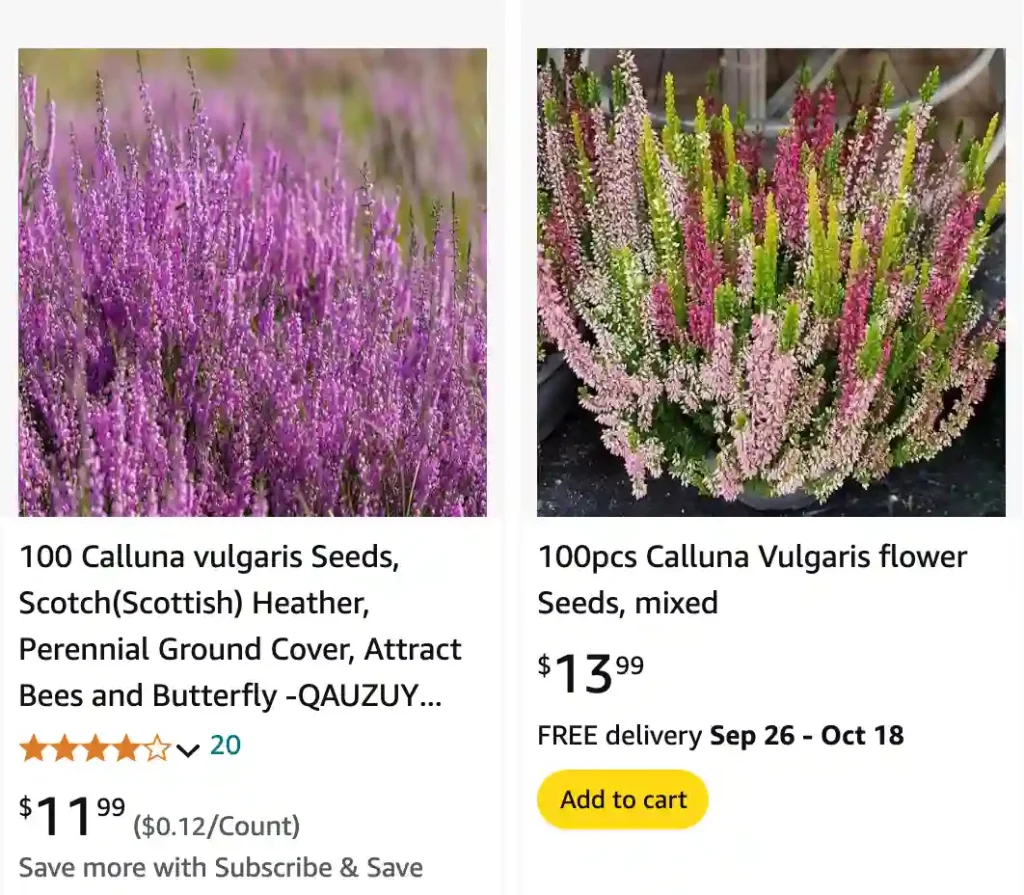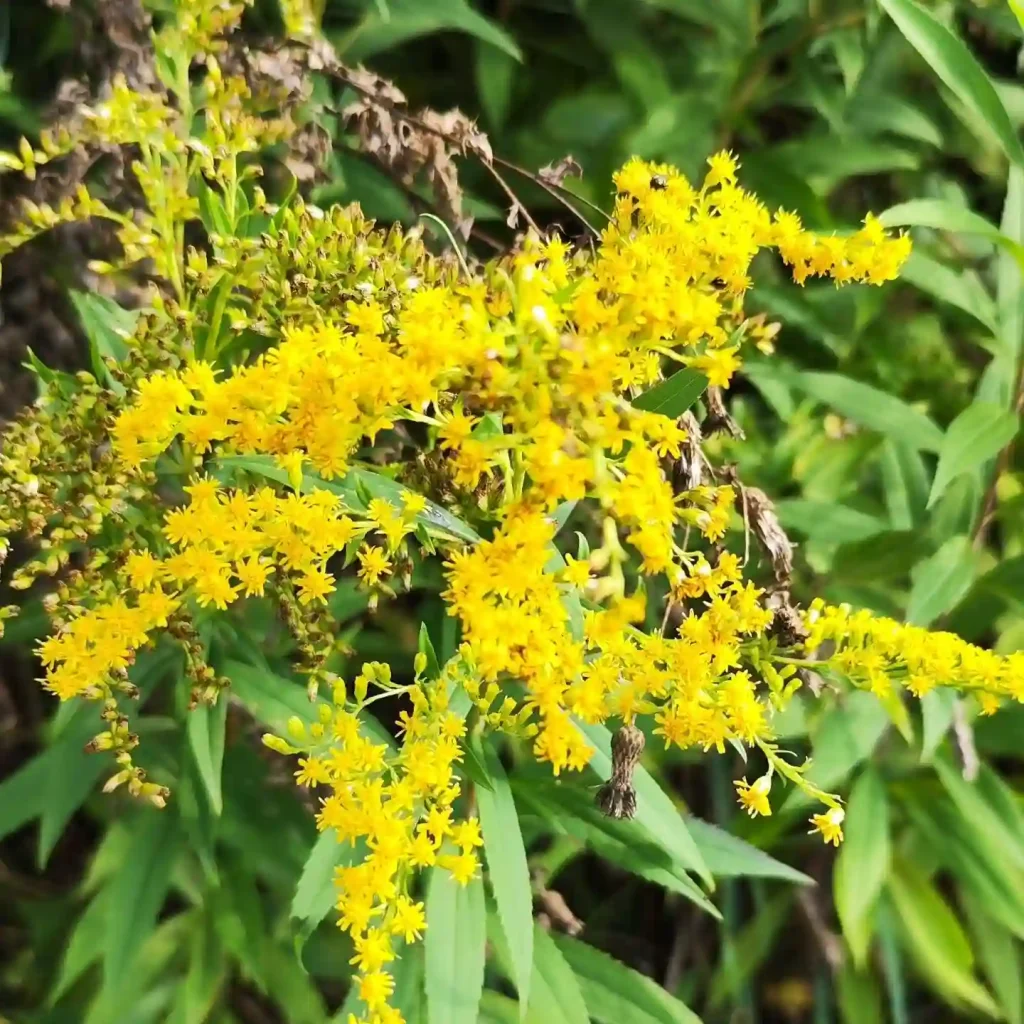
March 11 – Calluna
"Calluna, the heather plant, represents March 11."
Calluna symbolizes luck and protection. You are warm and welcoming, creating a sense of belonging for those in your life. Like this plant, you bring beauty and comfort wherever you go.
My Fascination with Calluna
I’m Ferb Vu, and I’ve always been drawn to the subtle beauty of heaths and moorlands. These landscapes, often painted in shades of purple and green, possess a unique charm that’s both wild and serene. This fascination led me to discover Calluna, a genus of flowering plants that plays a pivotal role in these environments.
What is Calluna?
Calluna, commonly known as heather, is a genus in the flowering plant family Ericaceae. While it might be easy to confuse it with Erica, the true heathers, there’s a key distinction. Calluna has tiny scale-like leaves and bell-shaped flowers with distinct sepals and petals. This sets it apart from Erica, which has needle-like leaves and flowers where the sepals and petals are almost identical.
What is Calluna Vulgaris?
Interestingly, Calluna is a monotypic genus, meaning it contains only one species: Calluna vulgaris. This species, however, is incredibly diverse in its appearance. It comes in a variety of cultivars with different flower colors, ranging from white and pink to deep purple and even red. The foliage, too, can vary, with some cultivars boasting golden or silvery leaves.
This diversity makes Calluna vulgaris a popular choice for gardens and landscaping. Its low-growing, spreading habit makes it ideal for ground cover, while its tolerance for poor soils and harsh conditions makes it a low-maintenance option.
Is Calluna Vulgaris Perennial?
Yes, Calluna Vulgaris is a perennial plant. This means it will come back year after year, providing long-lasting beauty in your garden. It’s well-suited to a variety of climates and can survive harsh winters.
How to Grow Calluna Vulgaris?
Growing Calluna Vulgaris is quite straightforward. Here’s a basic guide to get you started:
- Soil: Choose well-drained, acidic soil. Calluna Vulgaris thrives in soil with a pH between 4.5 and 5.5.
- Planting: Space plants about 12 to 18 inches apart to allow for their spread. Plant in a sunny or partially shaded spot.
- Watering: Keep the soil moist but not waterlogged. Heather is drought-tolerant but prefers regular watering, especially during dry spells.
How to Care for Calluna Vulgaris?
Caring for Calluna Vulgaris involves several key practices:
- Watering: Regular watering is essential, especially during dry periods. However, avoid overwatering, which can lead to root rot.
- Mulching: Apply a layer of mulch around the base to help retain soil moisture and suppress weeds.
- Pruning: Prune after flowering to maintain shape and encourage new growth. This also helps prevent the plant from becoming too woody.
When to Prune Calluna Vulgaris?
Pruning Calluna Vulgaris should be done after the blooming period, typically in late winter or early spring. This helps shape the plant and promotes healthier growth. Cut back the spent flower spikes and any dead or damaged branches to encourage new shoots.
How to Propagate Calluna Vulgaris?
Propagation can be done through cuttings. In late summer or early fall, take cuttings from healthy, non-flowering shoots. Dip the cuttings in rooting hormone, then plant them in a mix of peat and sand. Keep them moist and in a shaded area until they root.
What is a Good Compost for Calluna Vulgaris?
For Calluna Vulgaris, use a compost mix that is acidic and well-draining. A blend of ericaceous compost and sand or perlite works well. This type of compost ensures that the plant’s roots remain healthy and that water drains properly.
When Does Calluna Vulgaris Bloom?
Calluna Vulgaris typically blooms from late summer to early fall. The exact timing can vary based on climate and growing conditions. The blooms are a standout feature, providing a colorful display during a time when many other plants are winding down.
Is Calluna Vulgaris an Indoor Plant?
While Calluna Vulgaris is primarily grown outdoors, it can be grown indoors with the right conditions. It needs a bright spot with plenty of light and well-draining soil. However, it’s more commonly used in garden beds and outdoor containers.
Is Calluna Vulgaris Poisonous to Cats and Dogs?
No, Calluna Vulgaris is not considered toxic to cats or dogs. It’s a safe choice for gardens where pets roam. However, it’s always a good idea to monitor pets to ensure they don’t eat large quantities of any plant.
How Does Calluna Vulgaris Translate into Japanese?
In Japanese, Calluna Vulgaris is known as “ヒース” (Heesu). It’s not a commonly known plant in Japan, but it’s recognized by its botanical name.
Is Calluna Vulgaris Deer Resistant?
Yes, Calluna Vulgaris is generally considered deer resistant. Its tough, woody structure and strong aroma make it less appealing to deer compared to more tender plants.
Is Calluna Vulgaris Invasive?
No, Calluna Vulgaris is not classified as invasive. It’s a well-behaved plant in most gardens, though it’s always wise to monitor its spread and ensure it doesn’t overtake other plants.
What to Plant with Calluna Vulgaris?
Calluna Vulgaris pairs well with other acid-loving plants such as azaleas, rhododendrons, and conifers. These companions help create a harmonious garden bed with similar soil and care requirements.
Calluna Vulgaris vs Erica Carnea
Calluna Vulgaris and Erica Carnea are both types of heather, but they have distinct differences. Calluna Vulgaris blooms from late summer to early fall, while Erica Carnea blooms in winter to early spring. Calluna Vulgaris typically prefers slightly more acidic soil compared to Erica Carnea. Visually, Calluna has a more upright growth habit, while Erica tends to be more spreading.
Common Problems
Some common problems with Calluna Vulgaris include:
- Root Rot: Caused by overwatering or poorly-draining soil.
- Fungal Diseases: Can affect the leaves and stems. Ensure good air circulation and avoid overhead watering.
- Pests: Aphids and spider mites can occasionally infest the plant. Regular inspections and appropriate treatments can manage these issues.
A Hardy Survivor
Calluna vulgaris is a tough plant, thriving in conditions that many other species would find challenging. It prefers acidic soils and open, sunny locations, often dominating heathlands and moorlands where these conditions prevail. It’s also remarkably tolerant of cold temperatures and can even withstand drought conditions once established.
This hardiness makes Calluna an important component of many ecosystems. It provides shelter and food for various insects and animals, including bees, butterflies, and grouse. The dense growth habit of Calluna also helps to stabilize the soil and prevent erosion.
Uses and Symbolism
Beyond its ecological importance, Calluna has also been used by humans for various purposes. Traditionally, it was used for making brooms, thatching roofs, and even brewing a type of ale. Today, it’s primarily cultivated as an ornamental plant, but it also finds use in herbal medicine.
Calluna holds symbolic meaning in different cultures. In Scotland, it’s associated with good luck and protection. White heather, in particular, is considered a symbol of purity and is often included in bridal bouquets.
My Personal Connection
My interest in Calluna goes beyond its botanical characteristics. I’m intrigued by its ability to thrive in seemingly inhospitable environments, a testament to its resilience and adaptability. Its understated beauty and ecological significance resonate with me on a deeper level.
I find myself drawn to the landscapes where Calluna flourishes, the vast expanses of purple heather stretching as far as the eye can see. These landscapes evoke a sense of peace and tranquility, a reminder of the enduring power of nature.
In the future, I hope to learn more about the ecological role of Calluna and contribute to its conservation. I believe this unassuming plant has much to teach us about resilience, adaptability, and the interconnectedness of life.
If i die, water my plants!



